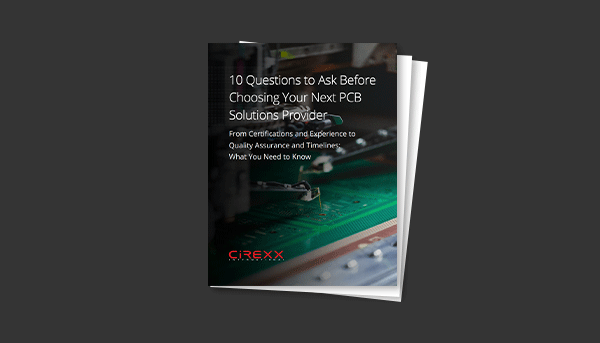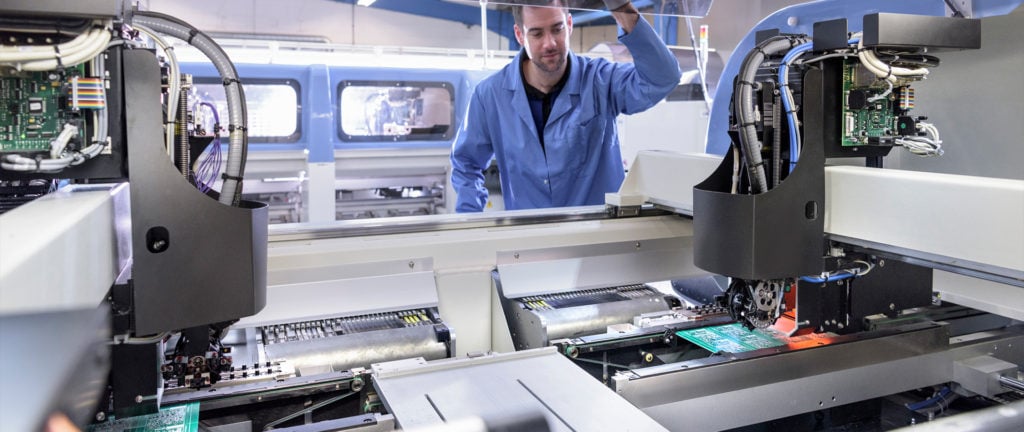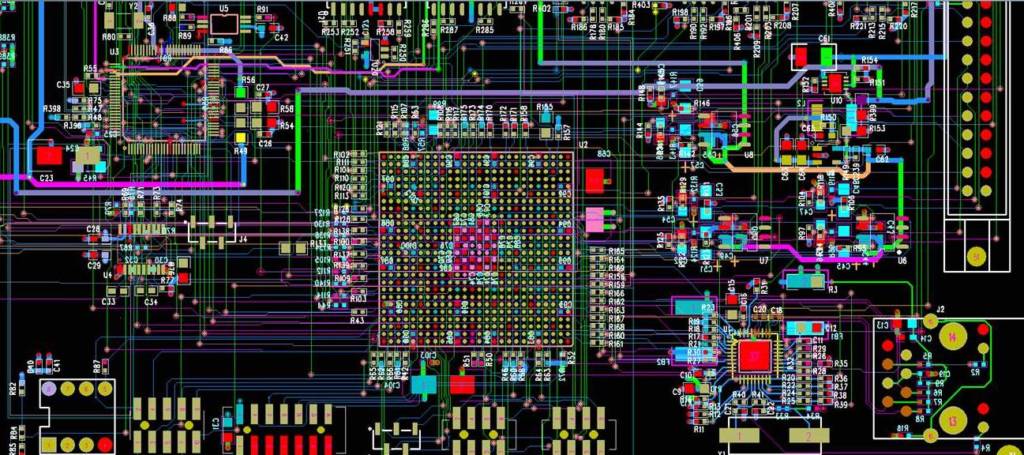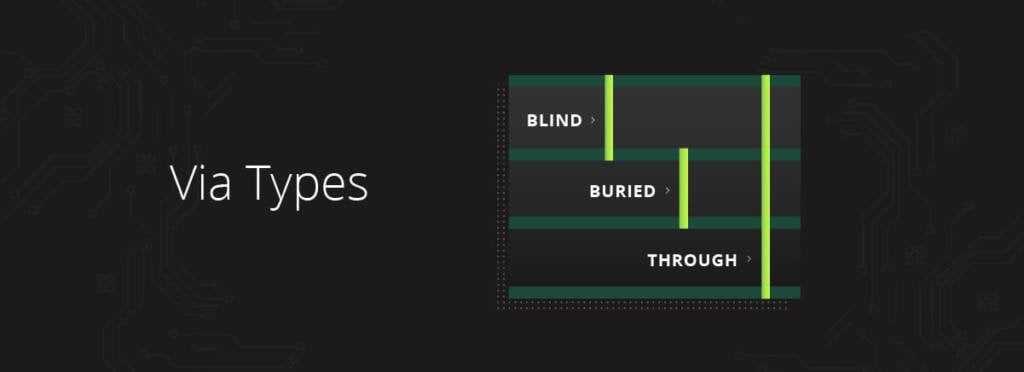OrCAD vs. Allegro — Your Complete PCB Design & Layout Guide
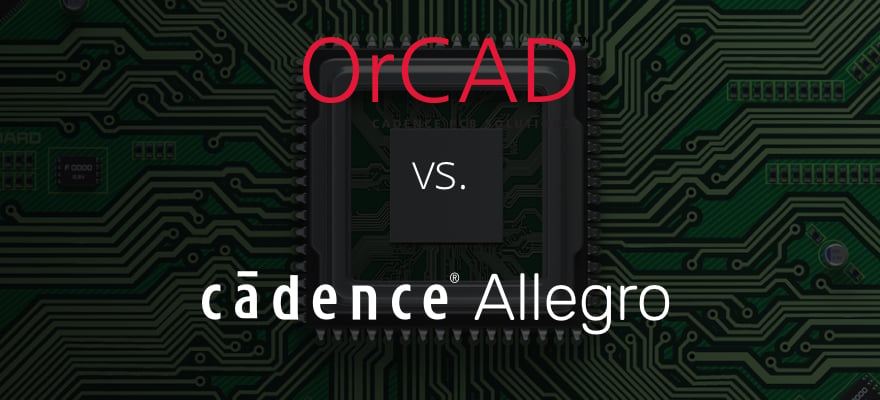
Allegro and OrCAD are two popular electrical design tools produced by the same company — Cadence. OrCAD is known as the most popular schematic capture tool in the Cadence suite, while Allegro is Cadence’s flagship PCB layout tool. Cadence also sells a version of OrCAD for PCB design, but most PCB designers working in the Cadence suite of software use Allegro PCB.
Why Choosing the Right PCB Software is So Important
Your time is important, which is why you want to design your PCB correctly from the start. Selecting the wrong PCB software can result in multiple unnecessary revisions, which can seriously delay the completion of your project — costing you time and money.
Allegro vs. OrCAD Comparison Table
Orcad PCB is essentially a cut-down version of Allegro PCB that comes in two tiers — professional and standard. Standard does not include an auto-router. Professional includes features for high-speed design such as length matching and differential pairs, as well as more features like constraint regions.
Allegro PCB is similar, but uses one base software version and has the user select additional licenses to add additional features (such as miniaturization, high speed, productivity, etc). Other than the feature sets included in the tier or license being used, the software is very much the same.
.tg {border-collapse:collapse;border-color:#ccc;border-spacing:0;}
.tg td{background-color:#fff;border-color:#ccc;border-style:solid;border-width:1px;color:#333;
font-family:Arial, sans-serif;font-size:14px;overflow:hidden;padding:10px 5px;word-break:normal;}
.tg th{background-color:#f0f0f0;border-color:#ccc;border-style:solid;border-width:1px;color:#333;
font-family:Arial, sans-serif;font-size:14px;font-weight:normal;overflow:hidden;padding:10px 5px;word-break:normal;}
.tg .tg-c3ow{border-color:inherit;text-align:center;vertical-align:top}
.tg .tg-0lax{text-align:left;vertical-align:top}
.tg .tg-0pky{border-color:inherit;text-align:left;vertical-align:top}
Allegro |
OrCAD |
|
|---|---|---|
| Allegro PCB Designer is Cadence’s main PCB layout tool. This will show you exactly how your board will operate and where the components will be placed.
|
OrCAD offers a variety of products, including the popular OrCAD Capture, which is Cadence’s schematic capture tool.
A schematic refers to a 2D design at the electrical level, illustrating where the components are connected. Other OrCAD software programs include OrCAD PCB Designer and OrCAD PSpice Designer. OrCAD Viewer is a free download that allows you to share OrCAD Capture and PCB Editor design data. |
|
| Pricing | You must enter your contact information for a quote directly from Cadence, but third-party resources report that the cost of an annual Allegro license is approximately $2,800 to $3,000.
|
The cost of a new, perpetual license for OrCAD PCB Designer Standard is $2,630. A new 1-year lease for the same software is $1,300.
The OrCAD PCB Designer Pro ranges from $2,300 to $7,140 depending on the license term and method. A free trial is also available. |
| Customer Service | Since Allegro and OrCad are owned by the same company, Cadence, the customer service and support for each is the same. Customers have access to 24/7 online support, software downloads, online access to articles and documentation, and more. | |
| Ease of Use | Easily configurable but not necessarily beginner-friendly. | |
| Ease of Setup | Both programs are similar in terms of setup and include the purchase of a license and installation of software. | |
| User Interface | Both software programs have an easily configurable UI in which you can rearrange panels to your preference. | |
| Inputting Design Rules | Spreadsheet-style format. Very powerful, but has a steeper learning curve than other rules engines. | |
| Controls and Key Bindings | ORCAD and Allegro likely have the same keybinds as they are essentially the same software. | |
| Part Creation | Component creation is more modular/procedural; there are more steps but more opportunities to reuse constituent parts of land patterns (like pads) for other components. | |
| Importing Schematic into Layout File (Netlisting Design) | You point the schematic toward a layout file and add the parts and connections. Will generate a report at the end detailing all changes. | |
| Error Checking | Supports real-time design rule checking (DRC), as well as batch DRC. | |
| Compatibility With Other Software | You can easily move from OrCAD to Allegro. You may not be able to move from Allegro to OrCAD if you are trying to open an Allegro design that uses additional license features that aren’t supported in OrCAD. OrCAD supports a standard set of cross-compatible files. | |
Allegro Overview
Allegro PCB Designer is Cadence’s main PCB layout tool, which means the software shows you exactly how your board will operate and where the components will be placed. One of the main differences with Allegro (versus other programs) is the software’s ability to break up functions into different applications, which typically uses less RAM.
Key Features of Allegro
Key features, as listed on Allegro’s website, include:
- Analysis-driven design
- Layout and routing algorithms
- Team design
- Manufacturability
- Real-time constraints
- High-speed design
- Team design and collaboration
- Design reuse and productivity
- Complex routing
- Miniaturization
- Design for manufacturability
OrCAD Overview
OrCAD has a bigger learning curve in addition to a high price tag compared to other software programs, but you can find promotions and discounts, which will alleviate the cost.
Users can try out OrCAD with a free trial. OrCAD’s most popular program is OrCAD Capture, a popular schematic design tool. In addition, the OrCAD Academic Program allows students to receive free OrCAD software with a valid academic email address.
Key Features of OrCAD
One of the main differences between these two software programs is that OrCAD has different functions broken up into separate applications. It does come with a large library of applications, and since it runs lighter on system resources, the software program doesn’t use as much RAM. As detailed on OrCAD’s website, features and capabilities include:
- Customizable workflow
- Real-time feedback
- Unified parts search and libraries
- Design reuse
- Hierarchical design
- DFM rules wizard
The features of OrCAD Capture include:
- OrCAD Symbol Editor
- OrCAD Capture Cloud Reference Designs
- OrCAD Capture Cloud
- OrCAD 17.2-2016 Capture Design Difference Viewer
- Title Block
- Property Editor
Pros & Cons of Allegro & OrCAD
Since Allegro and OrCAD have similar capabilities, let’s see how they stack up against other PCB software programs.
.tg {border-collapse:collapse;border-color:#ccc;border-spacing:0;}
.tg td{background-color:#fff;border-color:#ccc;border-style:solid;border-width:1px;color:#333;
font-family:Arial, sans-serif;font-size:14px;overflow:hidden;padding:10px 5px;word-break:normal;}
.tg th{background-color:#f0f0f0;border-color:#ccc;border-style:solid;border-width:1px;color:#333;
font-family:Arial, sans-serif;font-size:14px;font-weight:normal;overflow:hidden;padding:10px 5px;word-break:normal;}
.tg .tg-c3ow{border-color:inherit;text-align:center;vertical-align:top}
.tg .tg-0pky{border-color:inherit;text-align:left;vertical-align:top}
Pros |
Cons |
|---|---|
|
|
Which Projects Are Better for OrCAD or Allegro?
OrCAD is typically used for its schematic capture tool. You typically see Allegro used more as enterprise software at larger companies and by people who are already versed in the Allegro ecosystem. Altium CircuitMaker is a good choice for newer designers and small, simple boards. Allegro products are well suited for people who want highly configurable software and prefer the Allegro workflow.
Questions About PCB Software Programs?
If you would like more information about Allegro, OrCAD, or another type of PCB software program, please don’t hesitate to contact us. We look forward to hearing about your next PCB project!

